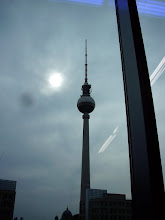This week-end takes place a festival of the arts in one of Berlin's most socially underprivileged areas with the theme of “Luxus“ (luxury) is obviously meant to provoke. For a while now, the value of art has been a matter of debate, especially when discussing the idea of guaranteeing that those working in the arts can make ends meet, as well as the discussion about whether Neukölln can remain a location for the arts scene. 48 Stunden Neukölln provides a forum to exchange ideas about these issues, to investigate other positions, and to give due attention to issues that concern people today. Exhibitions such as “surviving.art“ at the former Kindl-Brauerei and many of the other highlights in the programme, not to mention the plethora of other projects in the festival, all provide food for thought in the form of art, while also calling attention to societal and urban development issues that have an impact on this district. Neukölln is definitely in the process of being transformed. It is now internationally recognised as the happening neighbourhood in Berlin for those interested in sub-culture, especially in terms of the arts, cafés and pubs. A new segment of the population has appeared: mostly young, creative people who frequently have an international background. Neukölln has become established, beyond Germany, as an attractive “place to be“. This, along with a few other factors, such as the closure of Tempelhof airport and general developments in Berlin at large have had an impact on the property market. Demand for rented accommodation has risen substantially and with this, rents have also risen. The challenge for the future is controlling this process of change. Creative individuals, long-term residents and newcomers should all be able to co-exist. District offices, initiatives such as [Aktion! Karl-Marx-Straße], property owners and all residents strive for mutually agreeable solutions to this quandary. Potential inherent in the positive aspects of these developments for education, living together in harmony as well as strengthening cultural diversity must be taken advantage of, offering “improvements”, benefits for all. Neukölln offers an amazing amount of potential in the arts. Unfortunately, however, as is the case in much of the rest of Berlin, there are few who are able to sustain themselves by working exclusively in the arts. Artists and alternative spaces are notoriously under-financed. When rents and the cost of living rise, the so-called arts caravan has to hit the road again in search of another “neglected“ neighbourhood. That would prove fatal for Neukölln. Although the production and presentation of art here has received accolades all over the world, little has been done on the ground to improve infrastructure. Hardly any of the locations where this are properly financed. They are only able to exist because people are willing to work for free, to exploit themselves, or often managing to survive through subsidised low-wage employment programmes for the long-term unemployed, which give the appearance of a virtual, luxurious art biotope being able to sustain itself. Long-term, all of these existences are precarious. Even the financing of this figurehead of culture in Neukölln, 48 Stunden Neukölln, is never sure whether the festival will continue next year or not. From that perspective, the question has to be asked: is art is a luxury or not? Is it all right for art to be perceived as a luxury? Shouldn't “society“ insist that the arts receive more support that is presently the case? The organisers of this festival, Kulturnetzwerk Neukölln, dare to dream the dream of “Luxus Neukölln“ even further: that everyone who wants a job has one that he or she can live from. Neukölln is where you'll find an abundance of art exhibitions, theatre, dance and performance, readings, guided tours and parties. These activities take place in the streets and other public spaces, in garden allotments and parks in Neukölln, in addition to galleries, theatres, artists' studios and neighbourhood centres, pubs, private flats and a number of other, often unexpected locations in the district. Were you aware of the fact that there's a prison in Neukölln, hidden behind the district courthouse, in a courtyard? This building will be open to the public for the first time and c. 40 artists will react to the space. There's also an enormous amount of activity on at the former Kindl-Brauerei (brewery). Additionally, Kiez International (Berlin's longest running intercultural street fair) will again, this year, be organised by people from Neukölln from the most diverse backgrounds, cordially inviting all to get involved, even to sing and dance along! There are a lot of new things to experience during this year's 48 Stunden Neukölln. By clicking “Programme“ on this website, you can navigate your own route, with nearly 600 events to choose from at 330 venues.
Subscribe to:
Post Comments (Atom)



No comments:
Post a Comment